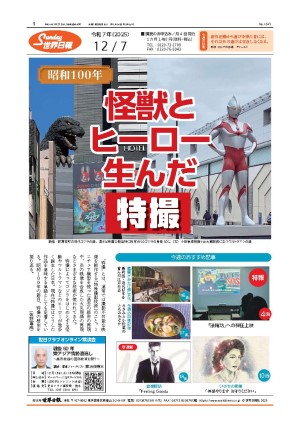ワーキング・プレス The Working press
共和国がほぼ建設されて以来、政府と、その政策や統治戦略を発表するメディアとの間に、激しい闘いがあった。
トーマス・ジェファソンは、「大陸会議」への代表として派遣したエドワード・カーリングトン(軍人、政治家)に向けてパリから書き送った書簡の中で、「新聞のない政府と、政府のない新聞」のどちらかを選ばなくてはならなくなったら「一瞬のためらいもなく、後者を選ぶだろう」と言った。
だが、この第3代大統領ほど、新聞とかビラなどのメディアから、多くの攻撃を受けた公的人間はいない。しかし、一度、大統領になると、彼は、最終的には、個人的な書簡の中で、激しい嘆きをさらけ出しながら、報道機関の党派的性質と見て取れたものに対して批判的になったことを示した。「新聞の中で見られるものは、今や何も信じることができない」「真実それ自身が、あの汚染された媒体を通すと疑わしいものになるのだ」と、1807年6月に、ジョン・ノーベル(編集者、政治家)に書き送った。
ジョン・アダムズ(第2代大統領)相手に闘った、ジェファソンの大統領選の最中、両者は報道陣を、相手を侮辱するために使った。ジェファソンと同盟を組んでいた新聞はアダムズを両性具有的人間だとか、偽善者などと言って非難し、一方、アダムズ陣営はジェファソンを人種的血統の問題を取り上げて攻撃した。
彼が大統領になるまでには、独立宣言文の作成者についての批判的意見を作り上げるために、さまざまな期待外れの話が掘り起こされ、新聞はしきりに、それらを書くように仕向けられた。ジェファソンの方は、記者という職業に従事する紳士たちの、より現実的な人物像を描こうとした。彼は2期目の最中に、マサチューセッツ州の議員に、書簡を書き送って「正しくないことと言えば、新聞の中にいつも多量に見つかる」と言い、そして「ニューイングランド州の検事総長に、新聞の論説委員らを教唆・扇動の罪で訴追するように」と、促した。
フランクリン・デラノ・ルーズベルト大統領と大手新聞のオーナーらは、ニューディール政策がどのくらい賢明なものかをめぐって言い争った。大統領は、共和党の前任者たちから引き継いだ伝統的保守政治を変えることを可能にするために、判事9人から15人の裁判体制に拡大して、米国の最高裁判所の法廷をすし詰めにしようとしたが、新聞界はその彼の提案を打ち破って祝杯を挙げた。
大部分の伝統的メディアとドナルド・トランプの間の激しい確執は、このような歴史から始まっている。しかし、それは、また、メディアや行政機関に起きた大きな変化の産物なのである。ラジオやテレビの出現も無論、最高に劇的な力を持っていた。
昔のある時期には、紛争は、「ワーキング・プレス(労働者階級のマスコミ)」と、編集者やオーナーとの間の競り合いにあった。1928年、「フロント・ページ」の中で、ベン・ヘクト(脚本家、映画プロデューサー)とチャールズ・マッカーサー(脚本家、映画監督)は、新聞記者を労働者階級として描き、編集者や発行人は資産家の一部として位置付けた。
しかし、社会学者、外交官、米国の上院議員、そして大統領顧問だったダニエル・パトリック・モイニハンは、劇的な変化が進行していると指摘した。昔の労働者階級出身から、給料が上がったりして、彼らは今や、郊外に住む新しいエリートの一員になったというのだ。ニュースを提供する闘いへの参加者としての彼らの伝統的役割は、大抵、ニュース(「印刷するのにふさわしいすべてのニュース」)を送ることから、(「私たちの意見と一致するすべてのニュースを私たちは印刷する」という)意見にあらかた道を譲ることになった。
その競り合いは、ドナルド・トランプ政権に反対するマスコミと、そうではない一握りの報道機関の間の関係性のコアを成すものである。大統領に反対するメディアを先導しているのは、ニューヨーク・タイムズ紙で、それから、ワシントン・ポスト紙であり、それと、意見を印刷して載せることができる、とてつもなく裕福なオーナーである。
メディア批評家のA・J・リーブリング(ジャーナリスト、作家)は30年ほど前に、正しい理解を示して見せた。報道の自由は、報道機関を所有する者に属するものである、と。しかし、それに、脚色、偏見、失策など、いろいろの欠点があったとしても、それは、政府のひもでつながれたメディアよりははるかにましである。
(10月28日付)
Almost from the founding of the republic, there has been a vibrant competition between the government and the media for expressing government policy and governing strategy.
Writing from Paris to Edward Carrington, whom he had sent as a delegate to the Continental Congress, Thomas Jefferson said had he to choose between “a government without newspapers or newspapers without a government, I should not hesitate a moment to prefer the latter.”
Yet no public figure suffered more from attacks by the media - newspapers and handbills - than the third president. But once president he eventually became critical of what he saw as the partisan nature of the press, airing bitter grievances in personal letters: “Nothing can now be believed which is seen in a newspaper,” he wrote to John Norvell in June 1807. “Truth itself becomes suspicious by being put into that polluted vehicle.”
During Jefferson’s presidential campaign against John Adams, both men used the press to insult each other. Jefferson-allied papers accused Adams of being a hermaphrodite and a hypocrite, while Adams’ camp attacked Jefferson’s racial heritage.
By the time he had become president, various disappointments had pushed newspapers to forge a critical opinion of the author of the Declaration of Independence. Jefferson, in turn, developed a more realistic view of the gentlemen of the press. In the midst of his second term, Jefferson wrote to a Massachusetts congressman: “As for what is not true, you will always find abundance in the newspapers.” He also urged “state attorney generals in New England to prosecute newspaper editors for sedition.”
President Franklin Delano Roosevelt and the owners of the major newspapers quarreled over how much of the legislation of the New Deal was wise. Newspapers celebrated the defeat of his proposal to pack the U.S. Supreme Court, expanding the court from nine to fifteen justices to enable a transformation of the traditional conservative politics he had inherited from his Republican Party predecessors.
Today’s bitter antagonism between most of the traditional media and Donald Trump arises from this history. But it is also a product of the significant changes that have taken place in the media and in the executive. The advent of radio and television are of course the most dramatic.
In an earlier time the conflict was a contest between “the working press” and the editors and owners. Ben Hecht and Charles MacArthur, in their 1928 play,“The Front Page”, presented newspapermen as of the working class, and their editors and publishers as part of a moneyed elite.
But as Daniel Patrick Moynihan, the sociologist, diplomat, U.S. senator and adviser to presidents, pointed out, there has been a dramatic change in the character of the reporters themselves. From their working class origins of the earlier period, with larger salaries, they’re members now of the new suburban elite. Their traditional role as participants in the struggle to present the news (“all the news that’s fit to print”) has sometimes given way to mostly opinion (“all the news that fits our opinions, we print”).
That contest is the essence of the relationship between the press opposing Donald Trump’s administration and a handful of other outlets. Leading the media against the president is The New York Times and The Washington Post, and a fabulously wealthy owner who can afford to buy the paper to print the opinion on.
The press critic A.J. Liebling got it right a generation ago. Freedom of the press, he said, belongs to the man who owns one. But with all its preening, bias, failures and shortcomings, it’s far, far better than a press on a government leash.
October 28, 2018





